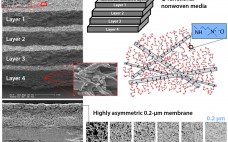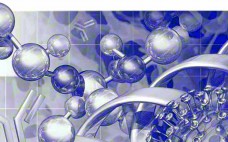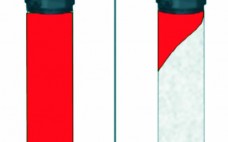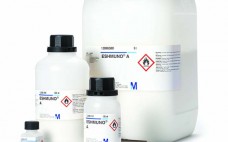Monoclonal antibodies (MAbs) are the most prominent and successful therapeutic proteins in the pharmaceutical industry. More than 35 MAbs have been approved to treat a range of conditions, and hundreds more are in development (1, 2). Once, the upstream cell culture process was considered the bottleneck to producing high antibody doses required for treatment, but recent advances in cell culture technology have boosted antibody titers to the range of 5–10 g/L (3). That increase in productivity has shifted focus onto…
Chromatography
Reagent Clearance Capability of Protein A Chromatography: A Platform Strategy for Elimination of Process Reagent Clearance Testing
During the manufacturing of monoclonal antibody (MAb) products, many process reagents are used for cell culture and MAb purification to facilitate and control process performance. Process reagents are considered to be process-related impurities, so demonstration of their clearance is required for the chemistry, manufacturing, and controls (CMC) information submission of an investigational new drug (IND) application (1, 2). These reagents may be classified into two categories: generally recognized as safe (GRAS) reagents and potential safety concern (PSC) reagents (3). GRAS…
Optimization and Scale-Up of HCIC-Based MAb Purification Processes, Part 1
Monoclonal antibodies (MAbs) serve important medical needs in cancer treatment as well as that of autoimmune and infectious diseases (1). Antibodies are also widely used in clinical diagnostic assays. They can be coated on solid surfaces to bind specific analytes, conjugated to reporter molecules (either as whole antibodies or fragments) for analyte detection, used in sensitivity panels for lot-release testing, and supplied as positive controls in diagnostic kits (2). Our study evaluates the use of hydrophobic charge-induction chromatography (HCIC) for…
Affinity Capture of F(ab’)2 Fragments: Using Twin-Column Countercurrent Chromatography
Antibody fragments are potent active drug substances (1–4). Because they lack glycosylation, they can be produced using different biological expression systems, including yeast and microbial systems as well as mammalian cells. These molecules are interesting as biopharmaceuticals because they are smaller than full-size antibodies and therefore may penetrate better into different tissues. Antibody fragments are cleared faster in biological systems because they lack the Fc antibody structural region (4). However, fragments may be conjugated to increase their size for improved…
Protein A Intermediate Wash Strategies
Protein A affinity chromatography offers efficient monoclonal antibody (MAb) purification and is used extensively in large-scale MAb production. As is the case with most chromatography media, protein A resins often have some degree of nonspecific binding, which causes host-cell proteins (HCPs) to coelute with a MAb. To reduce nonspecific binding interactions, an intermediate wash step can be performed before product elution. Doing so can improve product purity, extend column lifetime, and potentially eliminate a subsequent polishing step. For large- scale…
Advances in Chromatography Automation
Not long ago, chromatography automation meant strip recorders and peristaltic pumps. Today, few people would consider that to be true automation, and even fewer would settle for binders full of strip-recorder paper reels. Automation is becoming intelligent and in the process is making our workflows smarter. But how close is automation to being as smart as an experienced scientist? Bio-Rad Laboratories spoke with academics, biotechnology R&D scientists, and industrial process engineers about the evolution of chromatography automation — where it…
Cost Estimation for Protein A Chromatography: An In Silico Approach to MAb Purification Strategy
Monoclonal antibody (MAb) production has adopted an accepted technology platform for downstream processing (1). The need for more economic processes has been addressed by increasing MAb titers in fermentation and aiming toward greater bioreactor volumes to increase productivity. Consequently, cost pressures are now passed on to downstream process groups. Membrane and chromatography resin savings are more important for MAb processes than ever before, with highly productive cell cultures generating large volumes of process fluid to purify (2). Traditionally, protein A…
Accelerating Purification Process Development of an Early Phase MAb with High-Throughput Automation
Monoclonal antibodies (MAbs) are the fastest growing segment in the biopharmaceutical industry because they are potentially efficacious in the treatment of diseases such as cancer and autoimmune disorders (1,2). With steadily increasing demand for efficient and affordable therapies, speed to clinic/market is important, and biopharmaceutical companies push multiple drugs into development each year to ensure business sustainability (3,4,5,6). Downstream purification process development for therapeutic MAbs is a critical step on their path to reach clinical trials and beyond…
IgM Purification with Hydroxyapatite
Hydroxyapatite (HA) has a long and successful history in the field of antibody purification, and it has worked well for immunoglobulin M (IgM) monoclonal antibodies (MAbs) (1,2,3,4,5,6,7,8). Applications range from initial capture to intermediate purification to final polishing. HA is best known for its superior ability to reduce antibody aggregates, but it also supports excellent reduction of DNA, viruses, and endotoxins. As IgM MAbs exhibit increasing potential in the fields of cancer and infectious disease and in stem-cell therapies, HA’s…
Nucleic Acid Impurity Reduction in Viral Vaccine Manufacturing
Commercial-scale viral vaccine manufacturing requires production of large quantities of virus as an antigenic source. To deliver those quantities, a number of systems are used for viral replication based on mammalian, avian, or insect cells. To overcome the inherent limitations in production outputs with serial propagation of cells, mammalian cells can be immortalized, which increases the number of times they can divide in culture. Modifications that immortalize cells are typically accomplished through mechanisms similar to those converting normal cells to…







